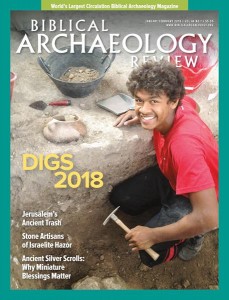Burnt to a Crisp
Sidebar to: Jerusalem and the Holy Land(fill)
Around 280 samples of charred wood were collected from the Jerusalem landfill and underwent a dendroarchaeological investigation. The samples were cut using razor blades and examined under a microscope. Dendroarchaeological investigations hold great potential for the reconstruction of ancient environments, both natural and cultivated. They also illuminate aspects of everyday life, such as building construction and object manufacture, as wood is a common and accessible raw material. In the ancient world, wood served as the main source of energy and was widely used for various crafts. Despite the large number of archaeological excavations that have been conducted in Jerusalem over the past century, few dendroarchaeological investigations have been undertaken.
This charred material came from the ashy remains of wood used to fuel ovens and kilns, which were discarded in the city’s landfill. The fuel was composed of mainly agricultural refuse in the form of roots and tubers, as well as pruned branches of fruit trees, mainly olive, fig, and vine. Previously, the agricultural activity around the city was assumed to be restricted to viticulture (grapes) due to the high frequency of vine presses and the relative scarcity of oil presses dated to the Early Roman period in that area.1 However, these dendroarchaeological remains, combined with textual evidence, indicate that the city’s agricultural hinterland was largely devoted to olive and fig horticulture, with an unknown scale of viticulture.
Already a library member? Log in here.
Institution user? Log in with your IP address.

